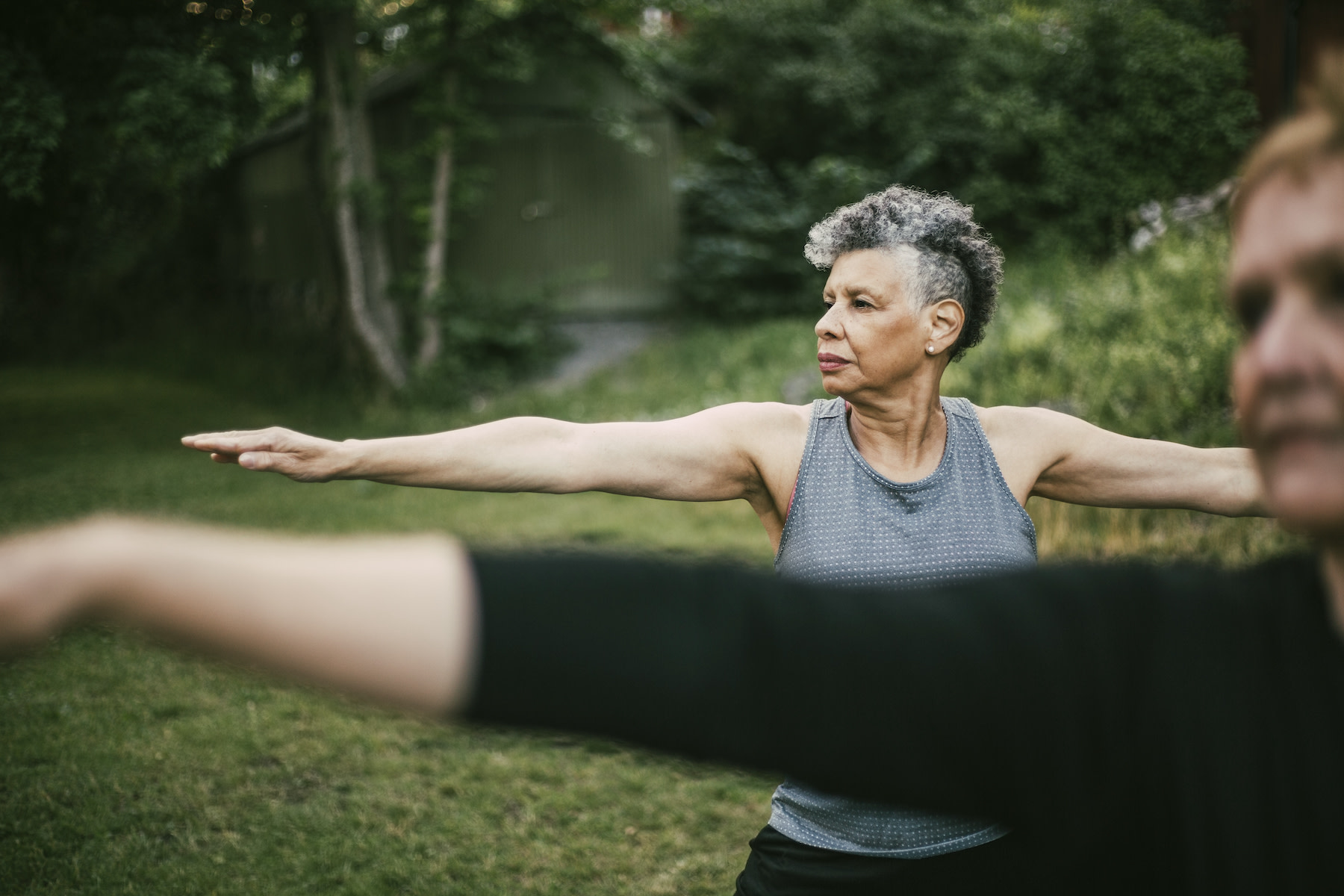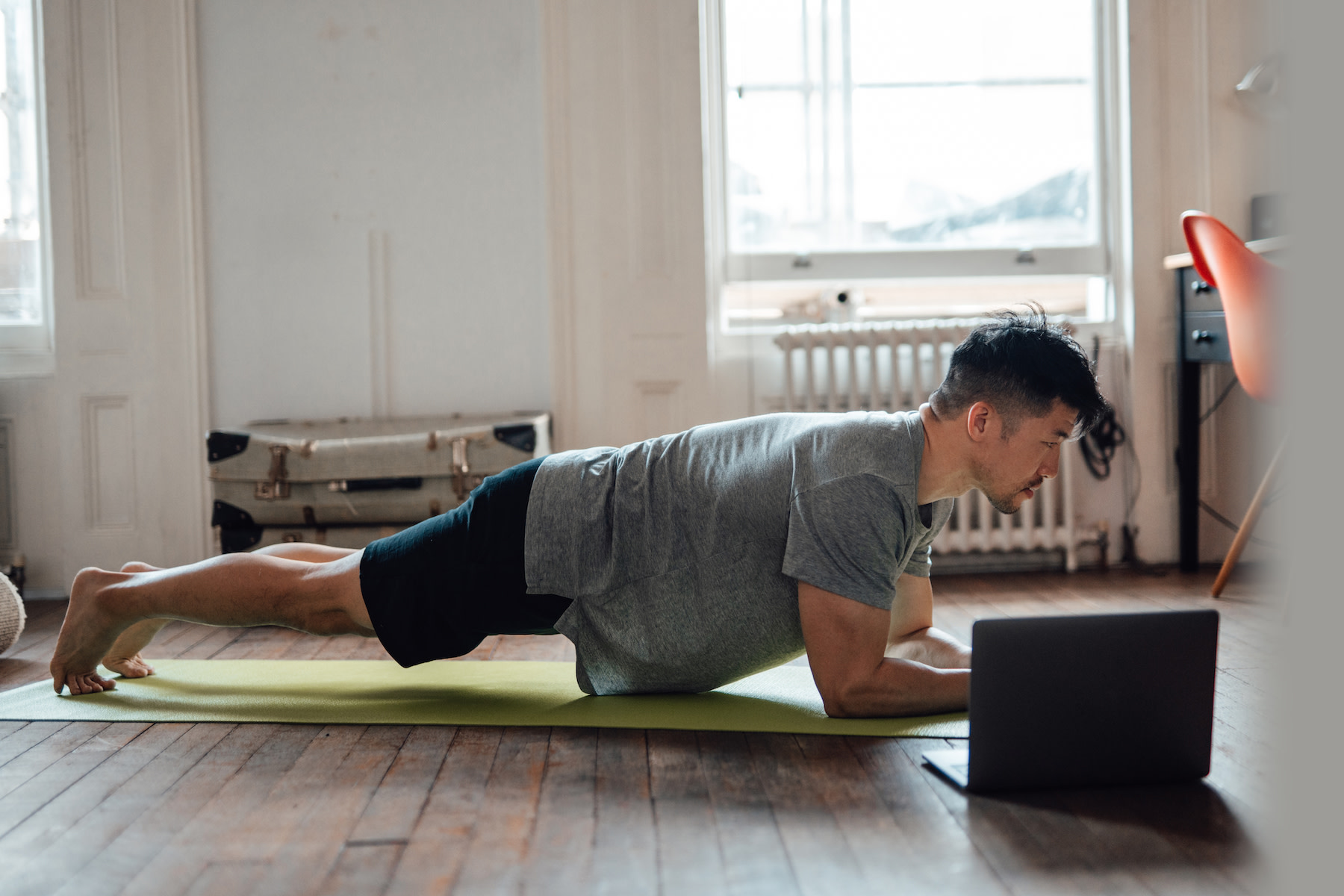What Does It Mean to Engage Your Core?
The Benefits of Engaging Your Core During Exercise
What Are Your Core Muscles?
When Should You Engage Your Core?
How to Engage Your Core Correctly
8 Exercises That Target Your Core
How Do You Know If You’re Actually Engaging Your Core?
Everyone Needs to Focus on Their Core
It’s a common refrain in any exercise class: Engage your core. When prompted, you probably dutifully scrunched up your abs and hoped that did the trick. But is that it? Maybe…maybe not.
“If you think of your body as a house, your core is the foundation,” says Jessica Brown, PhD, an associate professor of exercise science and the director of clinical education of exercise physiology at Carroll University in Wisconsin. “A strong and well-built foundation is essential for structural stability, as it can withstand external forces, such as wind or earthquakes. Likewise, a strong core stabilizes your body, allowing you to resist external forces in the form of sport, exercise or simple activities of daily living.”
That means if you don’t have a strong core, you may not be as strong as you think. Here’s what you need to know about how to engage your core correctly—during any activity—and why it’s critical for your overall well-being.
What Does It Mean to Engage Your Core?
When you engage your core, you contract the muscles in your midsection to strengthen and stabilize your body and support your spine and pelvis. You’ll notice that we didn’t mention your “abs.” Your abs are just one part of your core muscles—not the complete picture.
Here are a few ways that instructors may try to get you to engage your core, according to Peloton instructor Emma Lovewell:
Imagine you’re zipping up an outfit that’s a little too tight.
Draw your belly button in toward your spine, bracing your core to feel those muscles activate.
Give your body a gentle hug from the inside.
Imagine bracing yourself before someone punches you in the gut.
Someone’s about to throw a basketball right at you. What do you do?
“I try to say it a number of different ways because I want people to hear it and really understand what it feels like,” she says.
The Benefits of Engaging Your Core During Exercise
You can reap the rewards of core engagement all day, every day. “The muscles deep within your torso act as your body's natural corset, providing support and keeping everything in check,” Emma says.
1. It Helps You Maintain Posture and Balance
“If the core is important during the activities of daily life to prevent injuries and falls, it is even more important during exercise,” says Sean Collins, PhD, a professor of exercise physiology at the University of Lynchburg and a certified strength and conditioning specialist. “Maintaining proper form during a lift or locomotion (running, cycling, rowing, etc.) constantly challenges the core, which allows us to improve ‘force production’ and move our body better.”
He offers this example: Let’s say you’re doing squats without properly engaging your core. The force from your legs will begin to “leak” as you try to do the exercise, and as a result, your back will arch. Stability will become a challenge, and you won’t activate the right muscles. Engaging your core, however, will keep your spine straight and allow you to do the exercise properly.
2. It Improves Exercise Effectiveness
If you’re a runner, engaging your core will help smooth your strides, maintain your form, and exert less energy, ultimately improving your cardiovascular endurance. The same is true in cycling when it comes to strengthening your pedal strokes, Brown says.
Lifting weights? You’ll be able to lift more with increased core engagement. And in any sort of aerobics, dance, or yoga class, it will allow you to try a tricky move or isolate a certain muscle group while maintaining your balance. In short, stabilizing your core helps you perform any given exercise in the most effective and efficient way possible.
3. It Reduces Back Pain
Your lower back is often the weak link during exercise, Collins says. A lack of core engagement can translate to poor form and subsequent back pain. “Core strength will allow you to do various exercises at higher intensities with low injury risk,” he says. “Keeping your back from arching (or bending) is dependent on how strong your core is.”
4. It Makes You Stronger
In her work with cancer survivors, Brown sees how a weakened core due to surgery and treatments can limit a person’s ability to run, walk, or even do the laundry. “Without that foundational support, activities of daily living feel near impossible or can be dangerous,” she explains. “But a 12-week exercise intervention focused on the core makes all the difference. This core work doesn’t just improve fitness—it improves total body function and quality of life.” While this is an extreme example, of course, the concept applies to everyone. A stronger core translates to overall strength and ease of activity.

Maskot/Digital Vision via Getty Images
What Are Your Core Muscles?
Seven major muscle groups make up your core. While you may think your abs are the MVPs, that’s not actually the case. “All muscles of the core are important,” Brown says. “Only by working them all will you provide your body with true 360-degree support and protection.”
Here’s the breakdown:
1. Rectus Abdominis
This is the technical name for your abs, your two outer-abdominal muscles. Flat and parallel to one another, they sit in the front of your midsection and stretch from between your ribs to your pelvis. They flex your spinal column, helping you bend forward and sit up.
2. Transversus Abdominis
The deepest of your abdominal muscles, the transversus abdominis wraps around your midsection horizontally. Brown refers to it as the “torso sling." It provides critical support to your spine.
3. Obliques
When you’re doing bicycle crunches or side bends, you’re working your obliques. These muscles are responsible for your ability to twist and bend.
4. Erector Spinae and Multifidus
Located along your spine, these muscle groups stabilize your spine and pelvis when you walk or run, as well as help you stand up after bending over or lying down.
5. Quadratus Lumborum
The deepest posterior abdominal muscle, often referred to as a lower back muscle, starts at your pelvis and extends to your lowest rib. Its primary job is to stabilize your pelvis, and it’s usually the culprit in lower back pain.
6. Pelvic Floor
You might not realize this, but your pelvic floor muscles make up the base of your core. They support your organs and help prevent urinary incontinence, which can weaken after pregnancy and as a result of aging.
7. Glutes
Yep, your butt muscles are also part of your core. One of the largest muscle groups in the body, they help to stabilize your spine and take pressure off of your vertebrae.
When Should You Engage Your Core?
“It is essential to engage your core to protect your spine and improve your form during any exercise or activity that involves stability, lifting, pushing, pulling, or holding objects away from your body,” Brown says. “If you experience low back pain, feel unsteady or weak, most likely your core is not engaged and needs strengthening.”
The activity in question could be something as simple as walking, gardening, or lifting a stack of books—or as intense as wakeboarding, weightlifting, or skiing. You need to use your core during all these activities.
How to Engage Your Core Correctly
The specifics of how to engage your core will vary depending on the activity. “Core work can look like twisting or rotating your torso, but it can also look like stabilizing or anti-rotation, like if you're lifting weights unilaterally so the weight doesn’t pull you in that direction,” Emma says.
This basic exercise will help you engage your core:
Take a deep breath in from your diaphragm. As you exhale, draw your belly button toward your spine.
For 360-degree core activation, contract the muscles in the front and side of your core, as well as those in your lower back.
Hold the contraction for a second before releasing. Repeat these steps. You should be able to talk comfortably throughout this process.
It’s important to relax your muscles between sets. Constantly contracting them would trigger fatigue, Collins says. Instead, alternating between contraction and relaxation trains your muscles to respond quickly to stimuli. Developing this quick response rate is essential for your stability and balance, he says.
8 Exercises That Target Your Core
You can practice the exercise above anywhere, whether you're sitting at your desk or standing in line at the store, Brown says. However, she also suggests the following exercises to target the various parts of your core:
Bird-dogs
Planks and modified planks
Side planks and modified side planks
Trunk rotation while using weights
Russian twists
Glute bridges
Hip thrusts
Back extensions
“Most clients spend too much time working their anterior rectus abdominis for the six-pack, when they should be working the deep muscles and posterior chain, doing planks, back extensions and glute bridges,” Brown says. “When in doubt, plank it out.”
How Do You Know If You’re Actually Engaging Your Core?
It’s all about alignment. Your pelvis should be in a neutral position, not tilted. “Imagine your pelvis is a bowl that holds your spine and organs,” Brown says. “In anterior pelvic tilt, the bowl tips downward, while the back rises, creating an arch in your low back. Contracting your glutes and scooping your bowl up and forward will engage your core.” (This may be easier to visualize and accomplish in standing activities.)
For floor exercises on your back, Brown recommends this trick: Imagine you are blowing out a candle forcefully. When you exhale, your core immediately contracts and pulls your spine down to the floor, leaving no space between your lower back and the ground. Hold that engagement during all of your floor work. If your lower back starts to arch, blow out that candle again.
When you’re lifting weights, it’s essential to engage your core before every lift to prevent injury. “As you become fatigued, your core is the first to go,” Brown explains. “Focus on gentle contraction of your anterior and posterior core, breathe deeply, align your spine, and only when you are fully stable and engaged, begin your lift or exercise.”
Everyone Needs to Focus on Their Core
Ideally, you should engage your core while doing your typical workouts and in targeted core-strengthening exercises. Brown acknowledges that focused core work might not always be the most exciting activity—but it will pay off if you stick with it. As Collins reminds us: “A little bit of focused training can go a long way toward keeping us able to do all the things we like to do.”
This content is for informational and educational purposes only and does not constitute individualized advice. It is not intended to replace professional medical evaluation, diagnosis, or treatment. Seek the advice of your physician for questions you may have regarding your health or a medical condition. If you are having a medical emergency, call your physician or 911 immediately.



